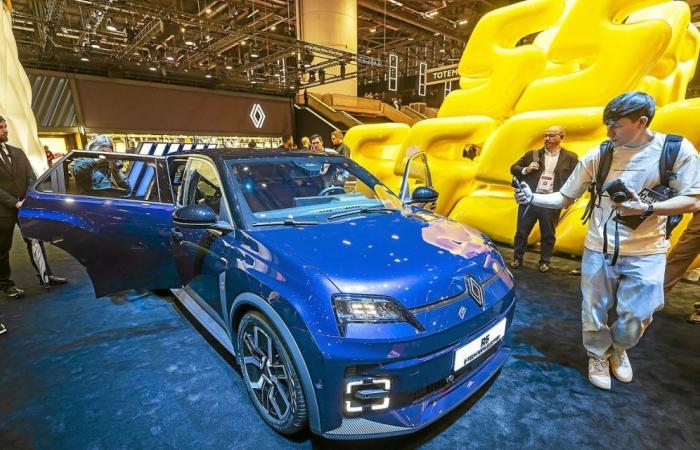Hyundai presented its future small electric car, the Inster, on Thursday, June 27, at the Busan Motor Show in Korea. Between the end of 2024 and 2025, the Renault 5, Citroën C3, Fiat Panda and Volkswagen ID.2 should slowly open the doors of electric vehicles to new motorists.
With possible purchase bonuses and scrappage bonuses, these vehicles fall below 20,000 euros, or from 99 euros per month for long-term rental. They still offer limited ranges, around 300 kilometers, but better than those of the first low-end electric vehicles. “We are impatiently awaiting segment B vehicles, small cars that meet the needs of the French, and at the right price,” comments Julien Billon, general manager of AAA Data. While electric sales have slowed in certain European countries, these new models could give them a boost. Especially since in use, if you charge them at home, they make the kilometer much cheaper than with a petrol car. “We are going to make people who didn’t think about it take the electric reflex,” said Thierry Koskas, the boss of Citroën, during the presentation in May of its C3, which will be priced from 23,300 euros.
Drop in battery prices
To achieve these prices while remaining profitable, manufacturers are taking advantage of the drop in battery prices. They are increasingly using LFP (lithium, iron and phosphate) technology, a cheaper, more durable but less powerful alternative to the most widely used NMC (nickel-manganese-cobalt) batteries.
Furthermore, Citroën, Dacia and Fiat “all base their vehicles on platforms (chassis) developed for emerging markets such as India and Latin America, designed more economically, with cheaper components and raw materials”, says Felipe Muñoz, analyst for Jato Dynamics. “There are many fewer parts” and “the range is simple,” summarizes Thierry Koskas. Manufactured in Eastern Europe, these economical models are equipped as standard with small battery packs.
New models expected
And other vehicles are expected to shake up the market. Chinese manufacturers must position themselves in the electric entry-level in Europe, after having multiplied SUV models, and while the European Commission has announced high taxes on their vehicles. Stellantis plans to launch the import of the small T03, produced by its partner LeapMotor, in September, while BYD has not confirmed its plans for a possible import of its small Seagull. Tesla also indicated that its inexpensive vehicle project, nicknamed Model 2, would be accelerated.
It must be said that the 2035 deadline is approaching. The ban on sales of new gasoline cars is putting increasing pressure on European manufacturers to expand their ranges. Especially since to meet emissions standards, they will have to sell on average 21% of electric cars over the year in Europe, according to calculations by the Transport & Environment think tank, or up to 25% according to Citroën.
This transition is only just beginning, also underlines the International Energy Agency. Only 25% of the more than 400 electric vehicles announced between 2024 and 2028 are compact models or intermediate segments. After a few months, these cars will also arrive on the second-hand market. Which should lead to a further drop in prices.






